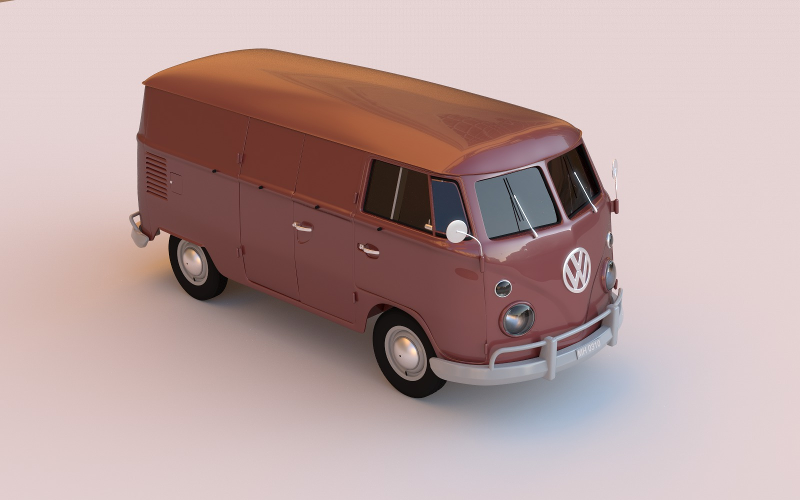Getting Started
2021-09-12Get Rust
First install Rust. To keep it up to date use rustup:
rustup update
Compiling rs_pbrt
Cloning the repository
There are two repositories you can get the Rust source code from:
Both should be exactly the same, but reported issues etc. might differ.
GitHub
# using SSH
git clone git@github.com:wahn/rs_pbrt.git
# or using HTTPS
git clone https://github.com/wahn/rs_pbrt.git
Codeberg
# using SSH
git clone codeberg@codeberg.org:wahn/rs_pbrt.git
# or using HTTPS
git clone https://codeberg.org/wahn/rs_pbrt.git
Use Cargo to compile executables
# enter repository
cd rs_pbrt
# compile without OpenEXR support
cargo test --release --no-default-features
# compile executable rs_pbrt (and run it to see options)
cargo run --release --no-default-features
For a debug version compile without the --release option.
# compile without OpenEXR support
cargo test --no-default-features
# compile executable rs_pbrt (and run it to see options)
cargo run --no-default-features
For more information about Cargo, check out its documentation.
The executables can be found in either the release or the debug target directory:
# release
ls ./target/release
# debug
ls ./target/debug
Create a local copy of the documentation
# no OpenEXR support
cargo doc --no-default-features
Use your favourite web browser to open the local (Rust source code) documentation:
firefox target/doc/rs_pbrt/index.html
You can also find the official documentation (of the latest release) on this web site.
Running the renderer
Without arguments (or by providing the -h or --help option) you
get a simple usage message of the main executable rs_pbrt:
# relative path to executable rs_pbrt (assuming release build)
./target/release/rs_pbrt --help
# output
rs_pbrt 0.9.3
Parse a PBRT scene file (extension .pbrt) and render it
USAGE:
rs_pbrt [OPTIONS] <path>
FLAGS:
-h, --help Prints help information
-V, --version Prints version information
OPTIONS:
--cropx0 <cropx0> Specify an image crop window <x0 x1 y0 y1> [default: 0.0]
--cropx1 <cropx1> Specify an image crop window <x0 x1 y0 y1> [default: 1.0]
--cropy0 <cropy0> Specify an image crop window <x0 x1 y0 y1> [default: 0.0]
--cropy1 <cropy1> Specify an image crop window <x0 x1 y0 y1> [default: 1.0]
-t, --nthreads <nthreads> use specified number of threads for rendering [default: 0]
-s, --samples <samples> pixel samples [default: 0]
ARGS:
<path> The path to the file to read
The version can be checked by:
# print version number
./target/release/rs_pbrt --version
# output
rs_pbrt 0.9.3
Your first rendered image
By specifing an input file (in this case cornell_box.pbrt) you can
render a
PNG image
(currently always being called pbrt.png):
# specifing an input file
./target/release/rs_pbrt ~/git/gitlab/rs-pbrt-test-scenes/pbrt/cornell_box/cornell_box.pbrt
# output
pbrt version 0.9.3 (unknown) [Detected 4 cores]
Copyright (c) 2016-2021 Jan Douglas Bert Walter.
Rust code based on C++ code by Matt Pharr, Greg Humphreys, and Wenzel Jakob.
Film "image"
"integer xresolution" [500]
"integer yresolution" [500]
Sampler "sobol"
"integer pixelsamples" [8]
Integrator "path"
Rendering with 4 thread(s) ...
1024 / 1024 [=======================================================================] 100.00 % 191.65/s
Writing image "pbrt.png" with bounds Bounds2i { p_min: Point2i { x: 0, y: 0 }, p_max: Point2i { x: 500, y: 500 } }
The resulting image should look like this:
![]()
If you modify the proper line in cornell_box.pbrt to use more
pixel samples you should end up with a less noisy image, but
rendering will take longer:
![]()
diff --git a/assets/scenes/cornell_box.pbrt b/assets/scenes/cornell_box.pbrt
index aa3a210..559e860 100644
--- a/assets/scenes/cornell_box.pbrt
+++ b/assets/scenes/cornell_box.pbrt
@@ -10,7 +10,7 @@ Film "image"
"integer yresolution" [ 500 ]
## "integer outlierrejection_k" [ 10 ]
##Sampler "sobol"
-Sampler "sobol" "integer pixelsamples" [8]
+Sampler "sobol" "integer pixelsamples" [256]
##PixelFilter "blackmanharris"
##SurfaceIntegrator "bidirectional"
##Integrator "directlighting" "integer maxdepth" [10]
Instead of modifying the .pbrt file you can alternatively specify
the samples per pixel on the command line:
./target/release/rs_pbrt --samples 256 ~/git/gitlab/rs-pbrt-test-scenes/pbrt/cornell_box/cornell_box.pbrt
More scenes to render
Because rs_pbrt isn't 100% compatible to the C++ counter part (yet)
I collect .pbrt scene
files in a
separate repository on GitLab. Have a look at the
Wiki
there.
Just clone it to another location:
# using SSH
git clone git@gitlab.com:jdb-walter/rs-pbrt-test-scenes.git
# or using HTTPS
git clone https://gitlab.com/jdb-walter/rs-pbrt-test-scenes.git
That's it, for a quick start ... have fun rendering some of the provided scenes!
